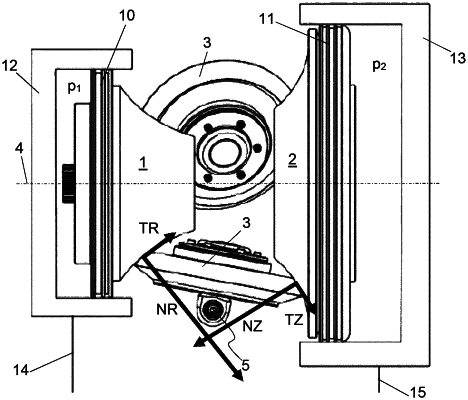| CPC F16H 61/664 (2013.01) [F16H 15/52 (2013.01); F16H 61/6645 (2013.01); F16H 2061/6641 (2013.01)] | 14 Claims |

|
14. A method for controlling a continuously variable transmission,
wherein the continuously variable transmission comprises an input shaft and an output shaft being rotatably arranged about a common central rotation axis, a ring wheel and a sun wheel being coaxially arranged with respect to the central rotation axis, and at least one pivotable planet wheel, a pivot angle of the planet wheel determining a transmission ratio of the continuously variable transmission,
wherein the method comprises:
operating the transmission through drill-free rolling of the at least one planet wheel on surfaces of the ring wheel and the sun wheel independently of the pivot angle of the planet wheel;
clamping together the ring wheel, the at least one planet wheel and the sun wheel such that the ring wheel exerts a first normal force on the at least one planet wheel and the sun wheel exerts a second normal force on said planet wheel;
operating the continuously variable transmission at a given input speed, a given transmitted torque and a given constant transmission ratio;
applying a predefined static value of the first and second normal force by controlling said first and second normal forces, such that a condition of microslip is applied to rolling contacts between the at least one planet wheel and the ring wheel and the sun wheel;
increasing or decreasing the pivot angle and thereby the transmission ratio; and
while increasing or decreasing the pivot angle, each of the first and the second normal force is either maintained at the respective predefined static value, or is adapted by adding a force component to the respective predefined static values, wherein the force component is smaller than necessary for the respective normal force to maintain the microslip condition.
|